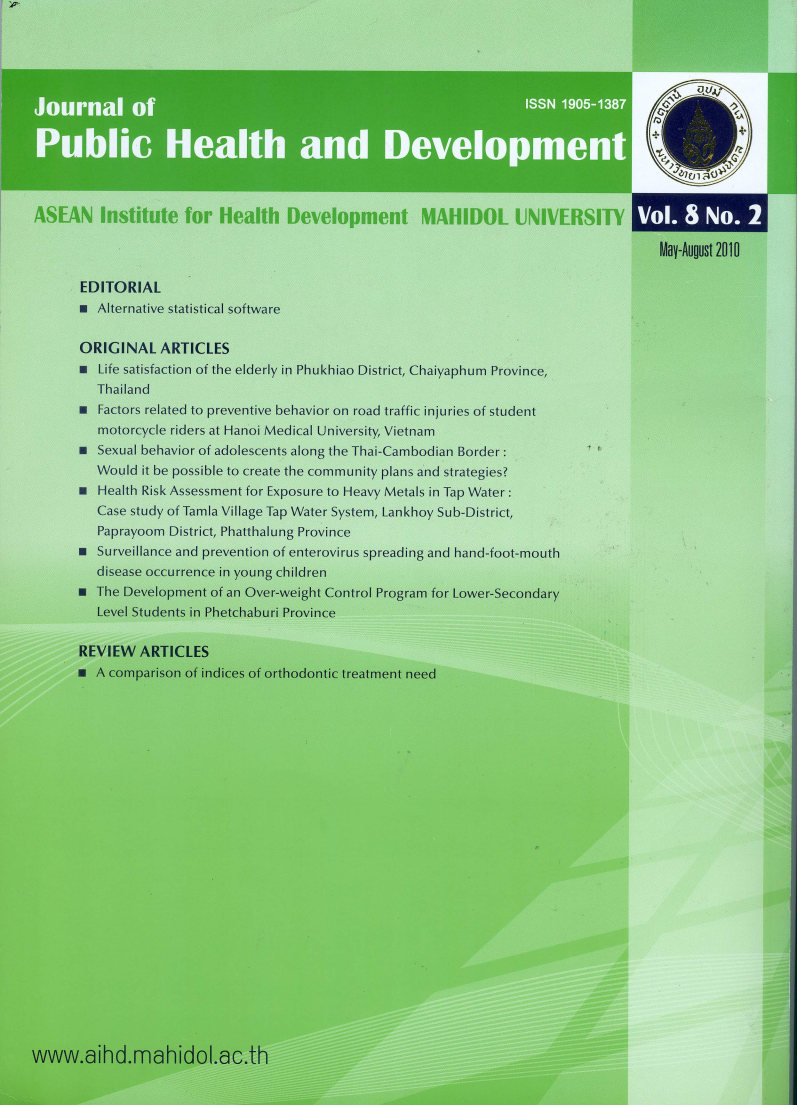Health Risk Assessment for Exposure to Heavy Metals in Tap Water Case study of Tamla Village Tap Water System, Lankhoy Sub-District, Paprayoom District, Phatthalung Province
Main Article Content
Abstract
The purpose of this study was to assess the health risk from exposure to tap water contaminated with heavy metals in the village tap water system of Tamla Village, Lankhoy Sub-District, Paprayoom district, Phatthalung Province. Water samples were collected from the beginning, middle and end of the pipeline. Water samples were also collected at different times, in the rainy (November, 2008) and dry seasons (May, 2009). The samples were then investigated for elements of the following nine heavy metals: iron, manganese, copper, zinc, cadmium, chromium, lead, mercury and arsenic.
The results showed that the village tap water was contaminated with some heavy metals, namely: iron, manganese, copper, and zinc. However, cadmium, chromium, lead, mercury and arsenic were not found in either season. It was also found that average iron concentrations in the rainy season at the beginning and end of the pipeline were 0.736 mg/l and 0.700 mg/l, respectively, which exceeded the water quality standard by about 8.33%. The results showed that the season was significantly associated with tap water contamination by heavy metals (p-value = 0.003). Finally, the overall of health risk value for tap water contaminated with heavy metals was 8.17X10-3 , which was acceptable and safe for consumption.


